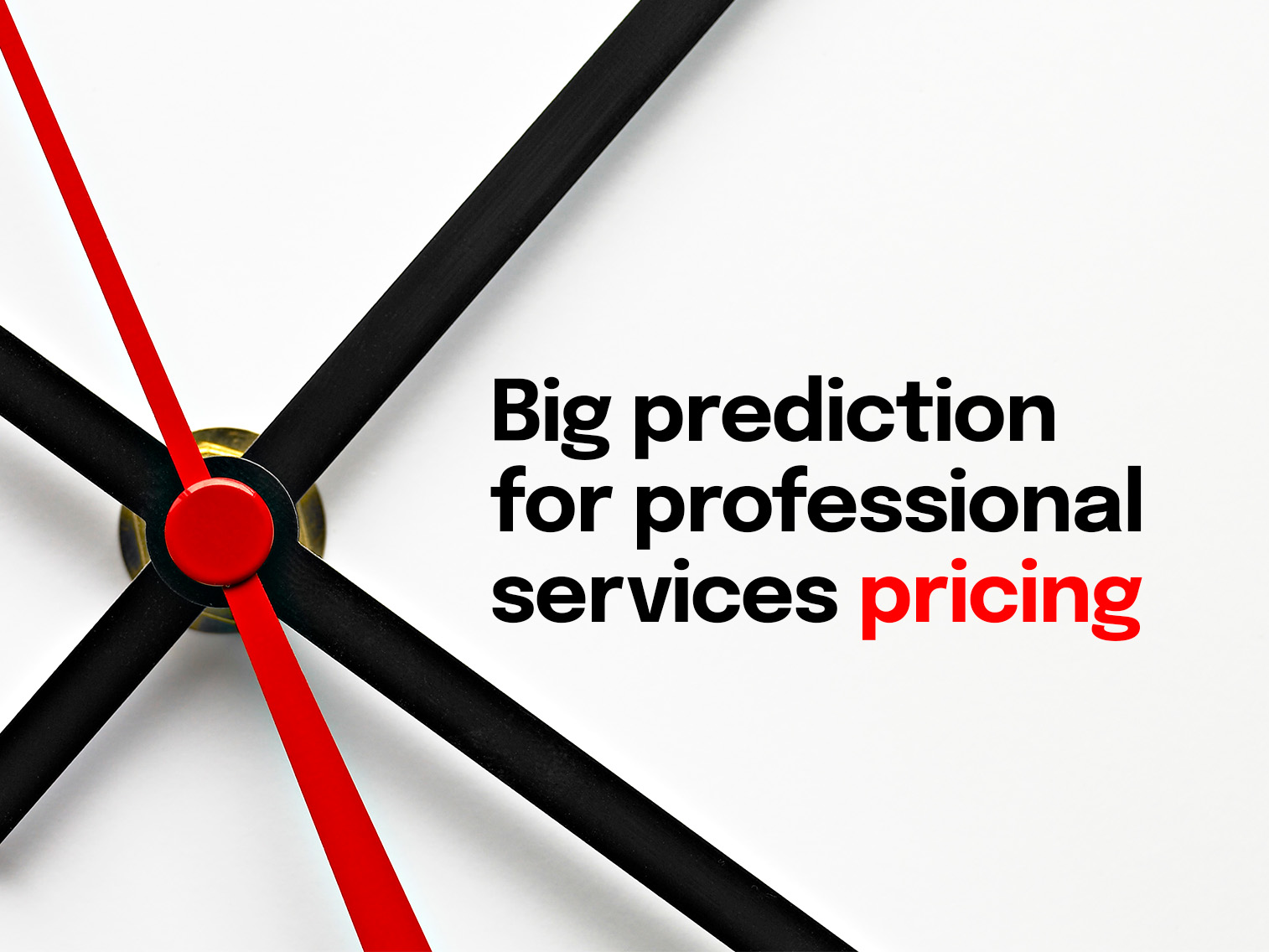On a seasonally adjusted basis, the NAB Online Retail Sales Index recorded a drop in growth in July


Insight
Could the end be nigh for the hourly billing model favoured by many professional services firms? As technology turns the dial towards value-based pricing, we examine the advantages in measuring outcomes rather than hours.

AI technology such as Chat GPT is set to end hourly billing. That’s the prediction of MinterEllison CEO Virginia Briggs.
That may sound startling for many professional services firms, where billing by the hour is deeply entrenched. But in the face of technological change, are we approaching the defining moment for the long-discussed model of value-based pricing?
Source Legal was an early adopter of value-based pricing. The firm’s founder and managing director, Stanislav Roth, believes that, in the face of technology advances, time is indeed losing its relevance in professional services.
“It might take you 10 minutes to deliver a really good piece of advice – are you going to charge $100 for that?” he says. “On the other hand, are you going to keep charging thousands of dollars for hours of routine work which is increasingly being automated?
“Value-based pricing is not random like that; it’s far more targeted.”
An opportunity to future proof
Adam Holster, Professional Service Banking Executive at NAB, is seeing a slow but steady shift to value-based pricing among his accounting firm clients. He believes this model helps firms ensure they are capturing the opportunities that AI offers while setting themselves up for the future.
And from a client perspective, Holster explains that billing on outcomes rather than hours can be a good way for professional services firms to show clients the value of the overall service they’re delivering, even if some tasks that were previously done manually are now being handled by technology.
Then there’s the time AI frees up, giving firms the capacity to pursue services beyond their traditional compliance work. These could include tax planning, cash flow management and advising on leasing versus buying assets. This benefits firms looking to pivot their business in the face of automation and clients who are staring down the barrel of a slower growth economic environment.
“As we enter a period where growth is going to be harder to come by, many businesses will be reaching out to their trusted advisers for help with strategic decisions so they can remain resilient despite the economic conditions,” Holster says.
“However, professional services firms need to clearly articulate the benefits these services are offering, and value-based billing is a good way to capture this because that value is quantifiable. Say you give a client a piece of advice that will save them $1 million a year. Do you charge your time or what the client thinks that’s worth?”
Say goodbye to time
Roth often talks to other firms about value-based pricing, explaining to them that the model involves a complete overhaul of how they value their services.
“If you’re still measuring how the work you’re doing compares with an hourly rate then you won’t get value-based pricing right, because it has absolutely nothing to do with time,” he explains.
Instead, Roth says the guiding principle should be to look at everything from the perspective of a client.
“Meet with a client and have an honest conversation. Understand their business, their needs and what solutions you might be able to offer to their problems. From there, you can make an educated guess about what value you’re going to be delivering. Finally, try to reach a consensus on this with the client.”
Of course, what you charge can change over time. “Value isn’t static,” Roth says.
But what about the risk of under- or over-pricing? Professional services firms should not let this scare them off, Roth says.
“It gets better with experience, but under-pricing is certainly something I’ve done. It can be remedied. If you have open and ongoing relationships with clients, then you can have conversations with them about adjusting pricing.”
In cases where a firm is unable to agree pricing with a client, Roth says this may show a lack of consensus on the value of services being delivered – a possible indicator that it’s not the right client for them.
What clients want
While a conversation about changing up pricing models might sound daunting, it’s helpful to think about how it benefits clients as well.
Holster says clients like certainty in what they’re paying and receiving. And firms are always having regular communication with clients on prices anyway.
“Talking about value-based pricing is a good opportunity to articulate the value of the services you offer, which is really important in this environment,” he says.
Holster acknowledges that, even with these factors in play, it’s still not an easy transition and recommends firms reach out to their banker or other adviser for a discussion around pricing strategies.
Roth believes courage is what’s needed for a firm considering shaking up their current pricing model. “Take fear out of the equation and have conviction that you can in fact run a very sustainable and profitable business by pricing this way,” he says.
© National Australia Bank Limited. ABN 12 004 044 937 AFSL and Australian Credit Licence 230686.